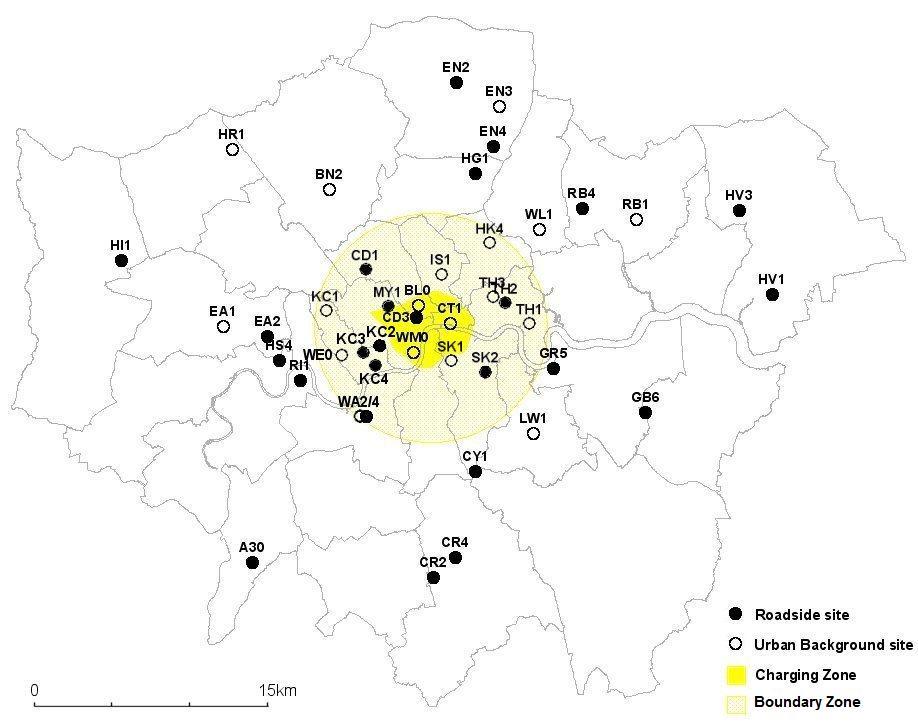Today’s reviewed report is a land mark report on London’s congestion charging system, introduced in 2003. The authors found significant reductions in pollutants in the charging and boundary zone as a function of distance from the centre, using both roadside and ambient monitors, reflecting the 18% reduction in traffic. Finding the precise impact of the charging system was made more difficult because of changes in the ambient air quality across the entire city and other measures that extended beyond the relatively small (22 km2) charging zone, factors that future congestion charging schemes would need to take into account.


Percentage change in geometric mean pollutant concentrations at background monitoring stations stratified by station location (within zone, boundary and control zones) and distance from CCZ centre
0 indicate stations within CCZ,
1 with cross indicate stations surrounding the zone boundary( indicate stations in control zone (8 km+ from zone centre).
The Y axis shows percent change pre-post CCS implementation and the X-axis shows the distance in km from the centre of the charging zone
Key Quotes:
“On 17th February 2003, a congestion charging scheme (CCS), operating Monday–Friday, 07:00–18:00”
“The main objective of the CCS was met: in the first year traffic volumes entering the zone fell by 18% and congestion (defined by the time taken to travel 1 km) in the zone was reduced by 30% compared to pre-charging levels”
“this is the first evaluation of the effects of a permanent traffic management scheme on pollution levels in a major city. With road pricing schemes being considered in the UK and elsewhere in the world this study provides valuable information to policy makers and the general public”
“The question of whether the observed reduction in background concentrations of NO, PM10 and CO and the increases in background NO2 and O3 observed within the zone are attributable to the implementation of the CCS is problematic. The congestion charging scheme was one specific action within a general programme of measures to reduce traffic congestion and air pollution across London as a whole”
“because of the concentration of traffic in the centre, these other measures may have had a greater relative impact in central London than outer London, thus explaining the observed temporal patterns in pollution observed in this analysis”
“our study suggests that the introduction of the CCS in 2003 was associated with small temporal changes in air pollution concentrations in central London relative to outer areas”
Related articles
- London Lacking in Clean Air? Blame Europe (time.com)
- London vans emissions discounts (bbc.co.uk)
- Clean air fund for London aims to dodge EU pollution fine (guardian.co.uk)
- Government tries to dodge EU fine with £5m for London clean air fund (businessgreen.com)
- Mortality Impact from Particulates in the UK (pollutionfree.wordpress.com)
- Polluted Air and Poor Health in UK Cities (pollutionfree.wordpress.com)
- Air pollution reduces life by about two years (beinghealthyhomeandaway.blogspot.com)
- High fuel prices thin out Sheffield traffic (sheffieldtelegraph.co.uk)

No comments:
Post a Comment